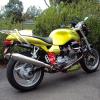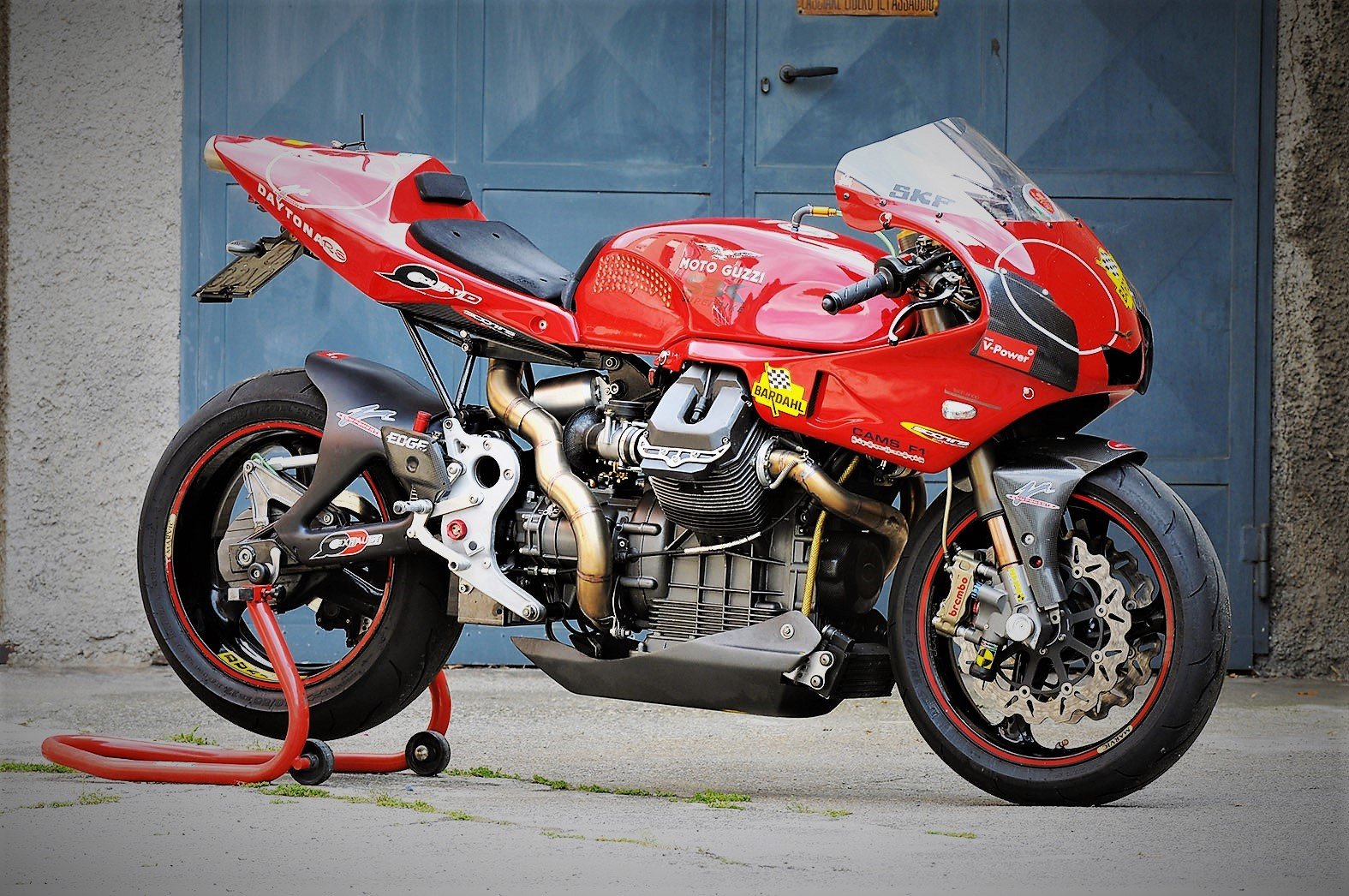-
Posts
5,212 -
Joined
-
Last visited
-
Days Won
268
Content Type
Profiles
Forums
Events
Gallery
Community Map
Everything posted by Lucky Phil
-
I have run Mobil1 0W-40 in pretty much everything I own ( 4 bikes and 3 cars) including the V11 for over 10 years. I buy iy in 20 litre drums. Works well. The Guzzi has virtually zero blowby and the throttle bodies and filter box are oil free and has adequate zink levels. These days 20W-50 oil is too heavy. Oil technology has moved on in the last 20 years. Ciao
-
There are many engines that are notorious for guide wear but the valves and seats seem to be ok. Guzzi Daytona engines, 70's Triumph twins, Ducatis of various models and earas.K-lines are NOT some band aid fix but a genuine improvement. As I said I've seen them used in race engines and road engines successfully for years. As for valve seats, well pretty much all manufacturers dont offer seats as a replacement part and unless you pay to have the seats made from scratch and installed at vast expense ( yes I know someone that does this) then you're not going to pay that kind of money unless is absolutely necessary. Ciao
-
Yes they do. Ciao
-
Yep, or buy your own kit and do it at home. Ciao That seems ambitious for most of us with simple garage tools? Thats all you need to use the kit, a hand held drill and a cheap pneumatic rivet gun. Ciao
-
Yep, or buy your own kit and do it at home. Ciao
-
Then its a shop of Muppets.A k-line kit is simple and relatively inexpensive. Each guide takes about 5 min to ream, sleeve, size and trim to length. The material is far superior to most std guide material and the interupted spiral grooves aid lubrication and reduce wear as well. I've seen them used on road and race engines and they are great. The big advantage also is that when you remove a worn guide and heat the head and drive in a new guide it never goes down the bore exactly the same as the old one so you end up needing to recut the valve seats which means cutters and lost seat material. The K-line doesnt suffer from this as it goes down the original guide ID so a valve lap is usually all thats needed. Ciao
-
I cant really see the guides being seriously worn at 34,000klm, not with the milegaes some have on this board. My record for guide wear is my Daytona engine, with one guide at 0.030". Thats not stem wobble thats actual clearance between the guide and the stem. Never heard it run so I dont know what it sounded like. Pulling the heads and a de coke and a set of K-line guide sleeves is cheap and effective option though. K-lines are better than the original guide material. Ciao
-
Did you tell him Chuck you dont wear them on the outside? Ciao
-
Praise the lord, I've been prosecuting the cause for these for years and this is the first time anyone has confirmed my suggestions. Why the hell spend a fortune on an ugly and heavy Corbin seat or lambs wool cover when a relatively cheap pair of cycling nicks are better. Ciao
-
Dont be a girls blouse, and get on with it. Ciao
-

Will California Special valve covers fit a V11 Cafe Sport?
Lucky Phil replied to polebridge's topic in 24/7 V11
These are whats fitted to mine. I love the look of them in black and a side benigit is they quieten down the valve gear. Well worth it in my view. Ciao -
Thanks for the responses I did not know the main seal is directional specific, that is a reason to choose the OEM instead of the one I found.Suggestion where can I get it in USA? Thanks Sent from my SM-G900F using Tapatalk Try MG cycle or failing that Motointernational. I learned the hard way with regard to the seals. Guzzi use directional seals just about everywhere as do other automotive manufacturers on seals that are difficult to access. (ie crank, driveshaft and gearbox seals) If you look at a Guzzi rear crank seal photo on MG cycle or the HMB guzzi site you will see small ribs on the sealing lip face these are the directional component and the ribs slope one way or the other depending on whether or not they are clock or anticlockwise. Ciao
-
You would need to be mad to fit an underwidth seal considering the hassle if it leaks and considering the cost saving I would go with the OEM seal. Also I bet the generic seal you're looking at is NOT an anti clockwise directional seal as the OEM one is. As I said an under width and bidirectional seal where a wider anticlockwise seal is specified is a little misguided. Ciao
-
Brace yourself for a rant.....I think shaft drives are such a joke and the Guzzi version especially. All this weight,compexity and failure points to do away with an oring chain that for the last 35 years has been trouble free,light weight, simple,easy to maintain, bullet proof and in a WCS you can renew completely with about an hour and a halfs labour including pouring the glass of red. I understand the in line crank lends itself to the shaft solution but I'd rather have a set of bevel gears in the gearbox to turn the drive 90 degrees and run a chain final drive. There was an argument for shaft drive pre oring chains and when engines were less powerful but that was going on 40 years ago. The guzzi rear bevel is such a dog of a thing, massively heavy prone to leakage and when it does leak its a right bastard to deal with. I havent even gotten to the shaft and Uni joints yet. Rant over, I feel better now:) Ciao
-
Batteries are like lawnmowers docc, they defy all logic are annoying and the more you f*ck with them the more painfull they are. With the amount of vehicles I have I seem to be forever buying one of the little b*stards Ciao
-
Plus the seat doesn't line up with the tank. Maybe I'm a harsh critic but it seems these days people are easily pleased with regard to engineering stuff. Its all about it being "different" more than it being "right". I'm not against a backyard special or a stripped down bike but lets face it this example along with many others out there has no style, continuity or flow. No elegance to it, Just bits cobbled together, then the audacity to do a "look at me" piece on the web. If I had cobbled something like that together (which I wouldnt) the last thing I would do is publicise it. Ciao
-
No, not really feeling it.....at all I'm afraid. Bikes like this just make me appreciate how well the original designers did. Ciao
-
I owned a DB1 at one point. It was so small and compact that whilst riding you actually had no view of the bike at all, it was like scooting along a few feet off the ground suspended in mid air. Interesting experience for a 6'2'' person. I have also owned a BM R1100S, quite a good thing. At the time I was very much a sports bike guy and it wasn't sporty enough for me, but now I think i'd actually like it more. Ciao
-
Here you go Chuck some Akrapovic titanium welding porn. Same as you can buy over the counter. Apparently all the welds are done manually by expert ladies. A thing of beauty and I garantee would fit perfectly.
-
Damn Chuck, I was looking forward to one of your write ups on bevel box rebuild. I've got a spare one here if you want the experience:) Ciao
-
Nice work Ciao
-

Oil pressure during cranking (first start jitters!)
Lucky Phil replied to Craig's topic in Technical Topics
What about before installing the front cover and oil pump drive you use a piece of rubber FI hose on a battery drill to spin and prime the pump, the oil cooler and at the same time check for flow to the heads. Then put the drive on the oil pump and the cam chain etc and button it up? Ciao -

Oil pressure during cranking (first start jitters!)
Lucky Phil replied to Craig's topic in Technical Topics
I am also wondering whether or not my pressure regulator got stuck open with debris from last years disaster. You mean after an engine failure you havent checked and cleaned the pressure reg during the rebuild?...tut,tut,tut Ciao -
True Chuck, the Stucci welds are nothing to get excited about:) Ciao


